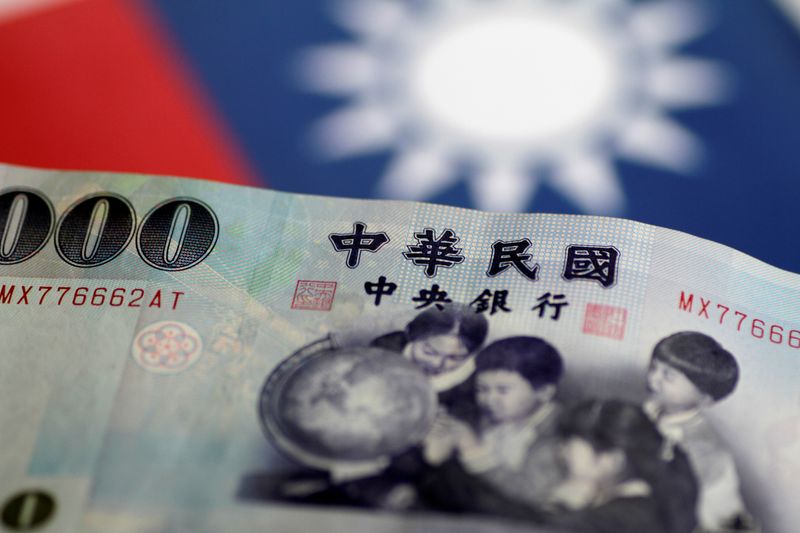Street Calls of the Week
By Ambar Warrick
Investing.com-- The Taiwan dollar fell the most among Asian currencies on Wednesday as concerns over a U.S.-China standoff persisted, while a sharp rise in the dollar pressured most other Asian units.
As of 0044 ET (0445 GMT), the Taiwan dollar fell 0.2%, hovering near two-year lows as investors continued to fret over U.S. House of Representatives Speaker Nancy Pelosi’s trip to the country- which has drawn ire from China.
Pelosi landed in Taipei late on Tuesday, and will meet with top Taiwanese officials later today. The Speaker is the highest ranking U.S. official to visit the island in 25 years, and her presence in Taiwan threatens to further destabilize Sino-U.S. ties. China has reportedly mobilized its air force and navy in response to the visit.
In addition to a conflict with China, Taiwan has to also contend with sluggish economic growth. Recent data showed Taiwan’s manufacturing sector shrank substantially in July.
China’s yuan was largely unchanged to the dollar at 6.7520. A private survey showed that service sector activity in the mainland expanded at a faster pace in July than the prior month, indicating that the economy was recovering from the COVID-related lockdowns imposed earlier this year.
The Japanese yen continued to be an exception to its Asian peers, rising 0.5% as it extended its recovery from record lows against the greenback.
Broader Asian currencies moved in a flat-to-low range on Wednesday, pressured by a large spike in the dollar. Hawkish comments from Federal Reserve officials Mary Daly and Charles Evans suggested that inflation was far from contained in the country, and that more steep interest rate hikes were likely in order.
The U.S. dollar index jumped 1% in overnight trade, while dollar index futures added 0.9%. U.S. 10-year Treasury yields rose nearly 7%.
Rising U.S. interest rates tend to be negative for Asian markets, as they curb the amount of capital foreign investors can invest in the space. A stronger dollar also tends to weigh on import-heavy economies in the region.
